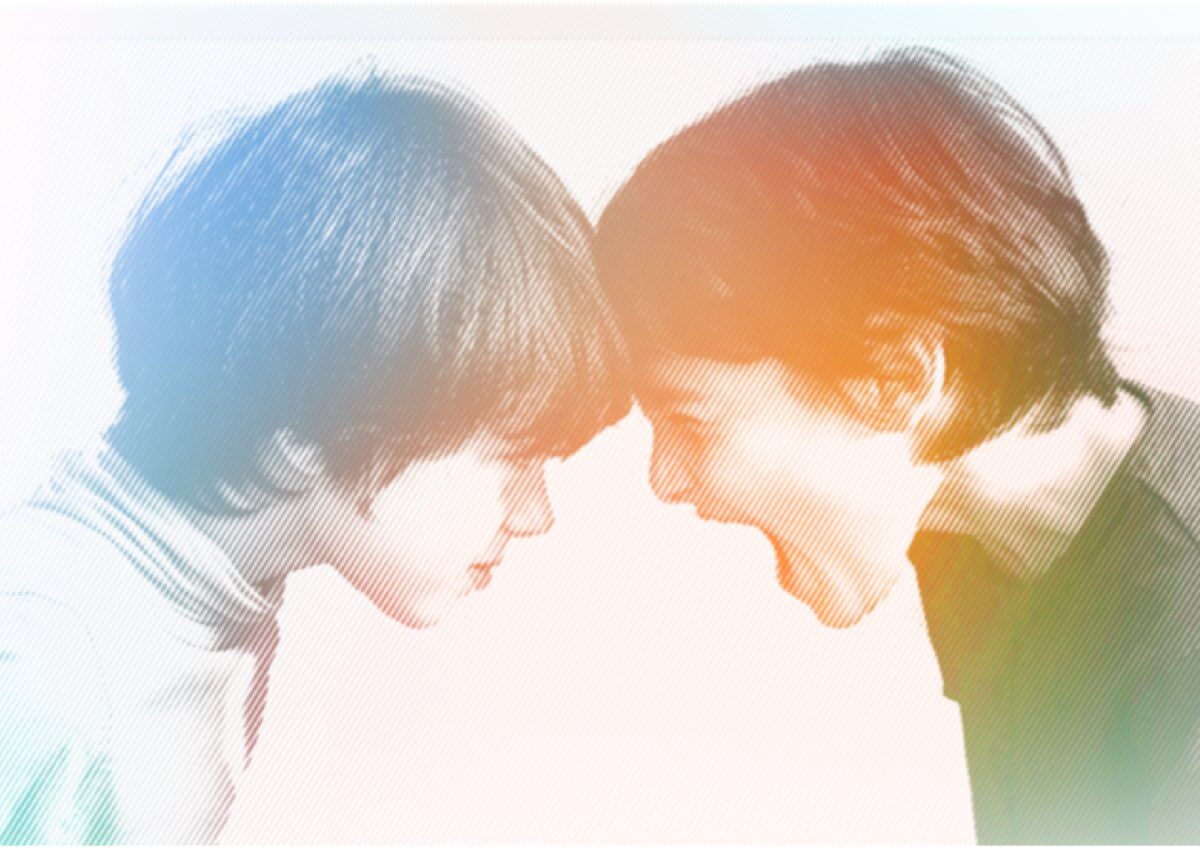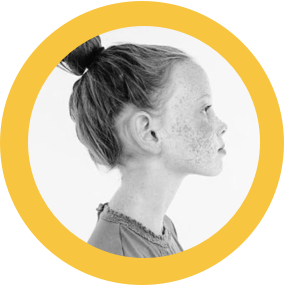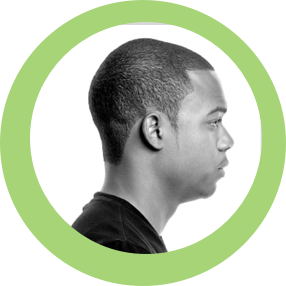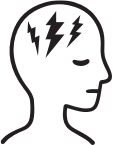
RECOGNIZING ADHD
Kids will be kids, or is it ADHD?
ADHD is a complex disorder that may look different depending on your child’s symptoms.
WHAT IS ADHD?
What is attention-deficit/hyperactivity disorder (ADHD)?
ADHD is a persistent pattern of inattention and/or hyperactivity-impulsivity that interferes with functioning or development.
The exact cause of ADHD is unknown, and its presence is not always easy to spot.
Is your child’s behavior part of a normal developmental stage, or could it be ADHD?
How many of these general ADHD symptoms do you see in your child’s behavior?
Preschoolers and young children:
- Overly energetic, even for a kid
- Difficulty following directions or taking turns
Teenagers:
- Reluctant to follow rules or pay attention
- Moody or irritable
ADHD is one of the most common mental health issues affecting children and teens.
Nearly 1 in 10 American children and teens have been diagnosed with ADHD, including approximately:

2.4%
of children aged 2-5

9.6%
of children aged 6-11

13.6%
of teens aged 12-17
RECOGNIZING TYPES OF ADHD
Did you know there are 3 different types of ADHD?
ADHD is diagnosed as one of three types: inattentive, a hyperactive/impulsive type, or a combination type. Have you noticed any of the following over the last 6 months?

Predominantly inattentive ADHD
Difficulty keeping on task and following through:
Your child may start schoolwork or chores, but quickly loses focus or gets easily sidetracked.
Difficulty paying attention:
Do you hear from teachers that your child has difficulty paying attention to lessons? Perhaps your child cannot appropriately follow instructions or stay organized in their schoolwork.
Appearing not to listen when spoken to:
It could be that when you speak directly to your child, you notice that his/her mind seems to be elsewhere, even in the absence of obvious distractions.
Often forgetful or easily distractible:
Does your child constantly lose school materials—or if older, misplace glasses, keys, wallet, or cell phone?
Predominantly hyperactive-impulsive ADHD

Fidgets or has difficulty remaining seated:
Do teachers complain that your child leaves his/her seat or moves around too much in class? Does it seem like your child is unable to be still for an extended period of time?
Always “on the go”:
Maybe your child cannot seem to play quietly or participate in social activities.
Talks excessively.
Blurts out answers to questions or has difficulty taking turns:
This can be as obvious as completing other people’s sentences or not being able to wait in line.
Combined (inattentive/hyperactive-impulsive ADHD)

Shows symptoms of both inattentive and hyperactive-compulsive ADHD.
Inattentive ADHD is much harder to diagnose than the hyperactive-impulsive type, but it still poses a risk to proper development and achievement.

Do any of these symptoms sound like your child?
Tell your child’s doctor right away—explain the impact these symptoms have on your child’s overall development in school, at home, and socially.
ADHD IN BOYS VS GIRLS
Did you know ADHD can affect boys and girls differently?
ADHD is often undiagnosed in young girls. While boys’ symptoms often fit the stereotypical ideas about ADHD, girls’ symptoms are often overlooked.
It is important to know what these differences look like in order to better assess your child’s possible ADHD symptoms.
Boys are more likely to:
- Act out and be restless
- Blame external factors for their symptoms
- Suffer from hyperactivity and impulsivity
- Be diagnosed and receive treatment
Girls are more likely to:
- Daydream and underachieve
- Blame themselves for their symptoms
- Suffer from inattention
- Be undiagnosed

It’s important not to overlook less obvious symptoms in girls and to get them the help they need.
Girls with ADHD that goes undiagnosed often develop depression, anxiety, and/or eating disorders that may follow them into adulthood.
CAUSES OF ADHD
What causes ADHD?
The exact cause of ADHD is unknown, and its presence is not always easy to spot.
Chemical:
Certain areas of the brain can be less active, imbalanced, or underdeveloped in people who have ADHD
Genetic:
A family history of ADHD increases the risk for the disorder
Developmental:
Children born prematurely, or to mothers who had difficult pregnancies, have a higher risk for ADHD
Environmental:
Fetal exposure to drugs or alcohol, and childhood exposure to lead, secondary cigarette smoke, or pesticides may increase the risk for developing ADHD
ADHD: It’s Not Just a Phase
Watch Dr. Amann explain how ADHD can persist from childhood into adulthood with lifelong consequences.
[Dr. Amann]
Hello. My name is Dr. Birgit Amann. I'm a child, adolescent, and adult psychiatrist in private practice at The Behavioral Medical Center in Troy, Michigan.
Let's start by taking a look at the title of this video, “ADHD: It's Not Just a Phase”. It's important to understand that, for the majority of children with ADHD, it persists from childhood into adolescence, and from adolescence to adulthood, with continued negative impact and lifelong consequences.
Now let's take a look at the persistence of functional impairments. Among those who are diagnosed with ADHD as a child, approximately 85% will no longer meet the full set of diagnostic criteria for ADHD as an adult. Yet, despite this, ADHD is still a highly persistent disorder when you think about the fact that a majority, 65%, will still experience functional impairments associated with ADHD. I always say, you don't graduate high school, hand in your ADHD, grab your diploma and run. It’s imperative for us to screen individuals of all ages when they come into the office. This is especially true if a family member has been diagnosed with ADHD or exhibits symptoms, as it’s a very inheritable condition.
Symptoms of ADHD change as we get older. In childhood, symptoms are typically of the combined type, meaning the child exhibits both inattention and hyperactivity-impulsivity. Let's break this down. We’ll start by discussing inattention.
For the child or adolescent, whether in school or at home, you'll see they have difficulty with sustaining attention. They don't listen when they're spoken to directly. They don't follow through on instructions. They lose things. For the adult, whether in the workplace or at home, they'll have difficulty finishing tasks that are required of them or have poor time management. They can't sustain attention when they're reading. They're distractible, forgetful, and they're not concentrating.
If we next take a look at hyperactivity, we all recognize the classic hyperactive child in the picture. A boy with a chair over his head, he's laughing, giggling. He's fidgety, he's running all over, he's having difficulty playing quietly and is talking excessively. In our adult, it's more of a subjective inner restlessness. Maybe our adult will choose a job that requires more energy or activity to help that inner restlessness, or maybe they will work many different jobs.
If you look at impulsivity, we're back to our picture of the boy with the chair over his head. But now, the question is if and when that child is going to throw that chair, or blurt out and be verbally impulsive. He's definitely going to have difficulty waiting his turn playing a game, or in a line, or something of that nature. But now, look at our adult. Maybe our adult will have difficulty in a conversation, interrupting others, which can cause an impact socially or within his relationships. Impulsivity, lots of different job changes. Low frustration tolerance, irritability, anger, and perhaps many failed relationships.
Next, let’s explore the lifelong consequences of these symptoms; it can be a very bittersweet story. In our children and adolescents, they can have social problems at school, or even outside of school. They may not meet their potential academically. Multiple accidents or injuries and conduct issues. They're very impulsive or careless. They get frustrated, and easily give up. They're stressed, but so are their family members, including siblings. They're having trouble making friends, and their self-esteem is really low, as a result of all these things.
In our adults, they often have low educational attainment. They could have pursued and attained something more, but they didn't. Or maybe they were passed up on many promotions or failed in their different jobs, which causes financial stress. Maybe they resort to drugs. There is the potential for fatal accidents, legal issues, risky sexual behavior, depression, anxiety, marital issues, and possibly even divorce.
Treatment with medication may improve functioning. I ask my patients all the time about how well they are functioning, and what their quality of life is like. We know that with proper treatment children and adolescents, as well as adults, may have a better quality of life.
For children and adolescents, they may have fewer injuries and fewer emergency room visits, while adults may have fewer car accidents. Children and adolescents may be less likely to be aggressive, moody, irritable, and angry. And adults may be less likely to abuse drug and develop depression. All of these positive effects make proper diagnosis and treatment extremely important.
So in summary, children don't outgrow ADHD. Symptoms and consequences continue throughout their lives. If we look at these 24-hour clocks, we can see there's a lot going on before and after school or work. Therefore, we really need to ensure 24/7 medication coverage. If you’re interested in learning more about ADHD, there are other videos available, including one that explores the 24/7 nature of ADHD in children and adolescents, and one that looks at ADHD issues that are specific to adolescents. Thank you for being part of this TEAM ADHD educational presentation.





